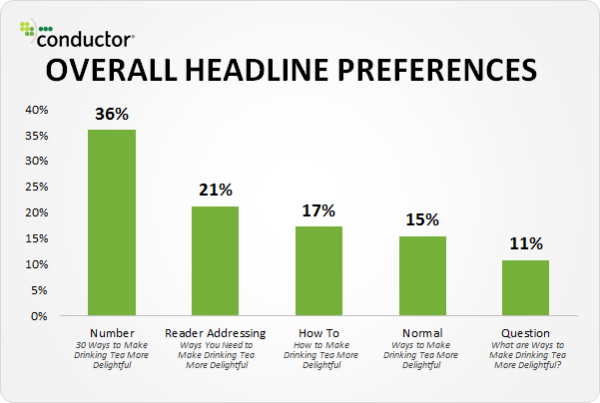 Business 2 Community
Business 2 Community5 Characteristics Of High Converting Headlines

Back in 2001, Consumer Reports put out a study that revealed the average American was consciously exposed to roughly 247 marketing messages daily, yet only really noticed around half of them.
While other “expert analysis” put that exposure to marketing anywhere between 500-5000 messages, this is the most sane explanation of what we’re actually aware of.
I bring this up, because to get “conversions” you must first grab attention. To grab attention, you must not only understand the needs of your market, but also the noise that goes along with it.
Of course, you can learn about how to speak to these problems & understand the noise, through customer development, feedback loops, qualitative studies, and smart social media marketing strategies, but even then, you might still need some help getting the market’s attention.
Now, to be clear, it’s only once you have the core understanding of why people are clicking that you should look into adding these characteristics. All to often, people employ these techniques while failing to understand the deeper reasoning as to why they work.
The information you’re about to read is very powerful, but I need to offer two disclaimers.
All these techniques don’t work all the time in every situation. Nonetheless, the data does point to these characteristics as being effective most of the time.
Different techniques work better for different audiences. Studies may say one thing, but your mileage may vary. You know your audience best.
Characteristic 5: They Have Numbers
Numbered list headlines can have astronomical click-throughs. You probably see dozens of articles like this every day.
There have been plenty of studies, split tests, and discoveries that dig into the data. Headlines with numbers are clear winners every time.
As I wrote this article, I went over to Twitter. Sure enough, ten entries from the top, here was what I saw:

I went over to Facebook. Same thing. Seriously, my friends are sharing stuff like this?
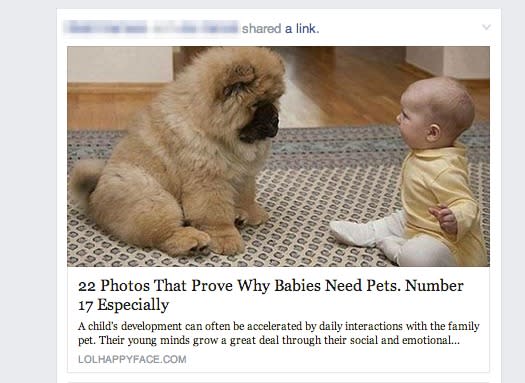
As it turns out, numbers plain work. Just ask Jonah Peretti. He’s the guy responsible for starting Buzzfeed, and wasting approximately 2.8 hours of every professional’s time each day.





Numbers are everywhere.
The Content Marketing Institute reports that headlines with odd numbers have a 20% higher clickthrough rate than headlines with even numbers.
Highrise tested their landing page headline, and came up with these results: The headline with a number had 30% higher conversion rate:
No number in main headline:

Number in main headline (winner):

Images from http://signalvnoise.com/posts/1525-writing-decisions-headline-tests-on-the-highrise-signup-page
Heck, I even used this technique for the article title you’re reading now. But… the question is, why are numbers so effective?
This is actually a way more complicated question with a whole branch of psychology & behavioral economics studying the effects of how numbers influence perception.
What it mostly comes down to is the context and how the numbers are used. For example, many cultures around the world are conditioned from a young age to infer that larger numbers means more of something.
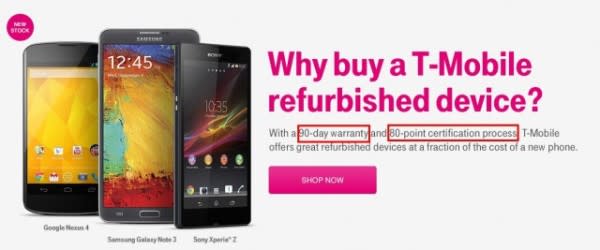
This is why you see “90 day” warranties, “600 minutes” & “80-point” inspections.
These numbers are way more appealing than “3 months”, “10 hours”, & “we push every button, swipe the screen in every direction, and make sure the camera & flash are working”
However, there is also the effect of unitosity, where larger numbers are more comforting in future-oriented or abstract contexts. A loan payment of $100/month for the next 180 months might be more agreeable than paying the same loan for the next 15 years. Researchers Monga & Bagchi of the University of Chicago have published a paper on their findings, you can check it out here.
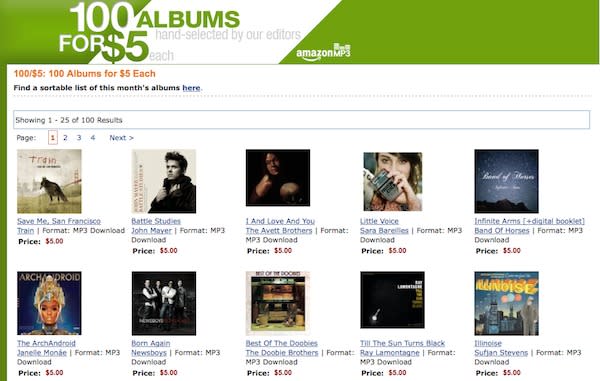
Another interesting thing about numbers that researchers Amos Tversky & Daniel Kahneman found was that the order in which you present them can influence perceptions.
In their study, they found that when the larger benefit was presented first, it “anchored” the viewer’s perception in that benefit. In other words, 100 albums for $5 each would be perceived as a better value than $5 albums out of the 1oo hand picked by the editors.
The reason for this is because the brain perceives the larger benefit first & assigns a larger value to the rest of the sequence. A similar effect is found in count-downs (going from 10-1) instead of count ups (1-10) as it builds anticipation for the best thing to come last in the sequence.
While these number characteristics aren’t necessarily headline specific, they can certainly be effective in creating long form sales pages.
Hans Villarica of The Atlantic has a great piece that goes into more detail on how numbers influence our perceptions.
Characteristic 4: They Have Between 5-9 (or 16-18) Words
The Guardian reported that headlines or titles with eight words performed the best.
Our research showed titles with eight words had the highest click-through rates with these headers performing 21% better than average – so consider the length of your title if you want to get clicks.
Why eight? Why not seven? Or thirty-five?
I don’t know. My hypothesis is that is has something to do with the limits of the human brain. One of the most highly-cited works in psychology is the 1956 research work by George A. Miller of Princeton.
The name of the paper is “The Magical Number Seven, Plus or Minus Two: Some Limits on Our Capacity for Processing Information.” The whole point of his research was that “the number of objects an average human can hold in working memory is 7 ± 2.”
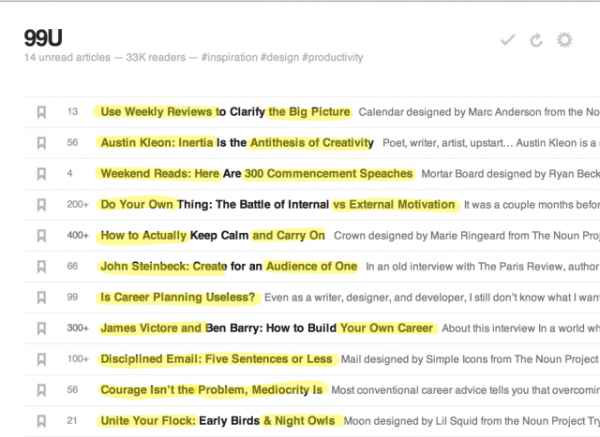
Combined with the usability research by Jakob Nielsen that has found that users typically scan the all web content, therefore pay the most attention the the first & last 3 words of a headline.
Moreover, it’s the first 2 words & specifically the first 11 characters that make the most difference in getting people into the content. In an analysis of the BBC website in 2009, he had this to say:
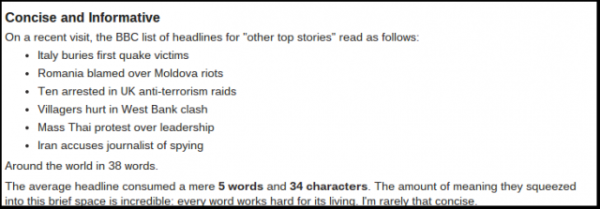
But, this isn’t always fool-proof, and there may be some effect on whether or not that headline is paid for or not.
In an earlier study by OutBrain, looking at only paid links within their network, it was found that the number of words increased to 16-18 words.

Though the “ideal length” changed, this was a trend that repeated itself across other languages as well:
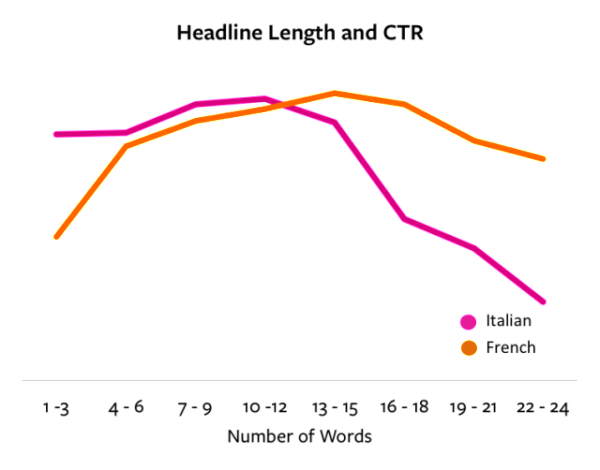
But the question is, why are the top performers for paid using nearly double the word count?
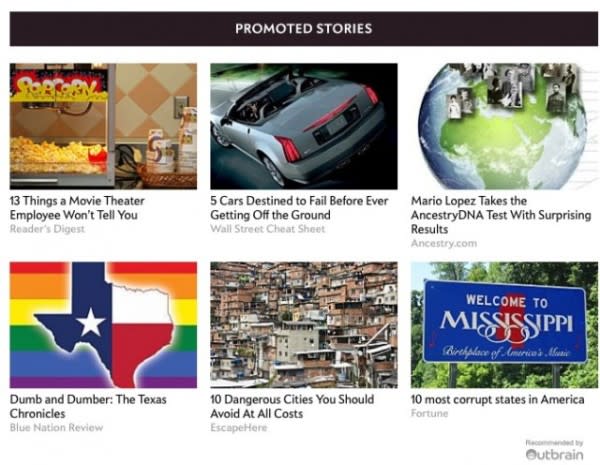
My guess is because promoted content in the Outbrain network is clearly marked & that many users may have an inherent click fear that comes with visiting a site they don’t instantly recognize.
More words however gives paid advertisers more “real estate” so to speak, to describe the content & reduce friction that comes with earning the click.
It may seem minor, but if you’re trying to attract people who have no idea who you are – longer, more descriptive headlines are worth experimenting with.
Characteristic 3: They Are Negative
For a long time, headline writers assumed that positive was better as far as clickthroughs, shareability, readability, and conversions.
It turns out, that’s not quite true.
To make sure you understand this point, the following are considered “positive” and “negative” words:
Positive: Always, most, best
Negative: Never, worst
How do they perform in testing? Here’s Outbrain’s findings:
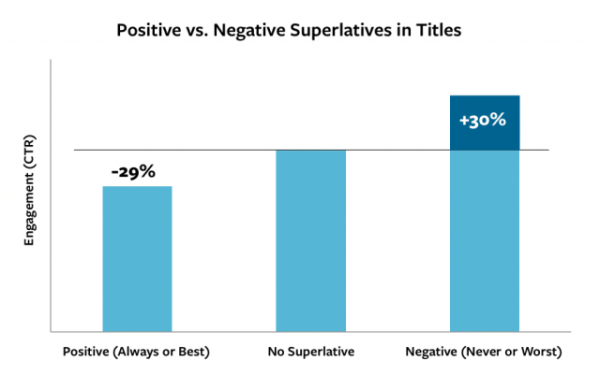
Negative superlatives in titles perform 30% better than the control, and more than 60% higher than positive ones!
Why is this the case? Seems a little twisted, doesn’t it?
Here’s how Outbrain summed it up:
Audience aversion to positive superlatives may simply be a product of overuse, or it could be because readers are skeptical of sources’ motives for endorsement. On the flip side, sources of negative information may be more likely to be perceived as impartial and authentic. Whereas positive superlatives may have become clichéd through overuse, negative superlatives may be more unexpected and intriguing.
It gets worse. Startup Moon research has found that words like “lose,” “kill,” “fear,” “dark,” “bleeding,” and “war,” outperform their more innocent or positive counterparts.
Positive superlatives don’t sell. A Moz/Conductor study came up with the same findings:
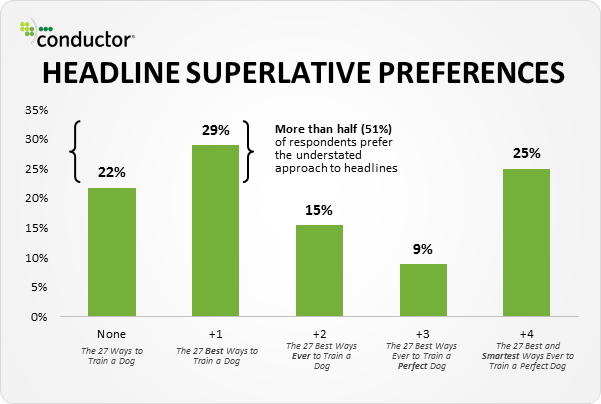
So, the takeaway is this: you can be dismal, or you can be neutral.
Just don’t go frothy and Pollyanna with a title.
Characteristic 2: They Have Two Parts
Successful headlines are an act in two parts. They have a beginning and an ending — a thesis and antithesis, a head and a tail.
CMI claims that “A colon or hyphen in the title — indicating a subtitle — performed 9% better than headlines without.”
Peep put it this way:
A good headline alone is not enough – it needs help…Include a sub-headline to boost clarity.
I’ve done this on a page for Neilpatel.com. Instead of a stand-alone headline with no support, I provide a two-part model:
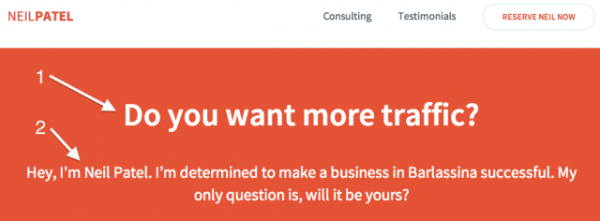
The same thing is happening on CrazyEgg:
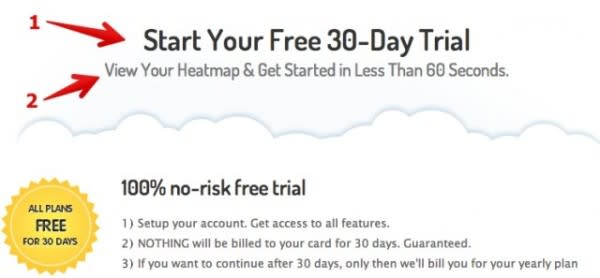
Personally, I believe this is because the sub-headline acts to re-affirm the reason why your reader is on the page, and acts as a primer for the story that the page is going to tell.
This “second” headline isn’t anything new either. It’s the meta description in the search engine:
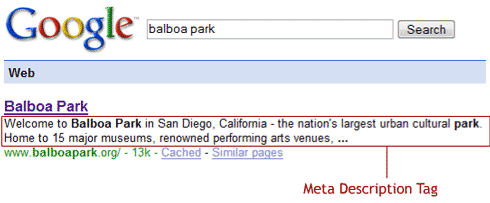
The “microcopy” on magazine covers:

And the extra bit of description on books that can make or break our interest:

Think this is arbitrary stuff? The team over at Timetrade.com might have too, if they hadn’t tried switching their main headline with their sub-headline – which was more benefit driven anyhow – and saw it contribute to a quick increase in conversions by 85%
Before:

After:

Characteristic 1: They Are Very, Very Clear
Great headlines leave no ambiguity as to their intent.
Questions, as it turns out, aren’t all that appealing. Sure, there might be a bit of curiosity, but it’s not exactly the most convincing method of engaging or converting.
One study surveyed the five most common title types, and discovered that the more clarity the headline had, the more appealing it was.
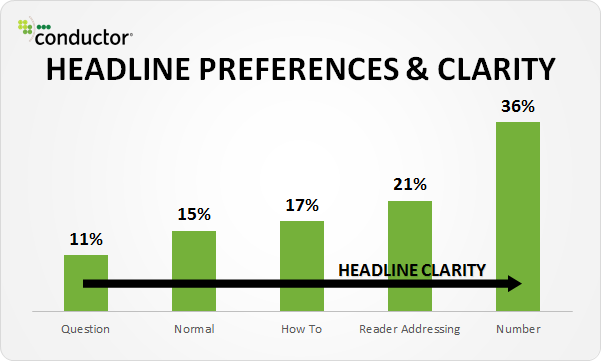
Here are the five headlines types that were tested in the above-cited study:
Normal (Ways to Make Drinking Tea More Delightful)
Question (What are Ways to Make Drinking Tea More Delightful?)
How to (How to Make Drinking Tea More Delightful)
Number (30 Ways To Make Drinking Tea More Delightful)
Reader-Addressing (Ways You Need to Make Drinking Tea More Delightful)
Jayson DeMers’s Forbes article discusses the importance of benefits in a headline, and writes this:
“They have to be specific – as specific as possible to your audience. For example, “How to Write for Social Media and Double Your Click-Through Rates in Thirty Days”. The headline’s focus and promised benefit are clear. As a reader I am able to form an expectation of what’s to follow. The benefit is also crystal clear: develop a skill and get more visibility.”
Nobody craves ambiguity or uncertainty, especially if looking for answers, solutions, products, or are about to spend money. People want clarity.
Be as clear as you can possibly be.
Conclusion
If you want to immediately improve your value, worth, contribution, and impact, please do this: Get really good at writing headlines.
Here’s what works:
Use numbers.
Use around eight words if people are familiar & between 16-18 if they’re not.
Use negative words, or at least few positive superlatives.
Use a two-part model.
Be very, very clear.
The better your headline, the better your marketing. Use these five characteristics, and I’m very confident that you will improve your conversion rates.
What are some other characteristics of high-converting headlines?
This article was syndicated from Business 2 Community: 5 Characteristics Of High Converting Headlines
More Business articles from Business 2 Community:
